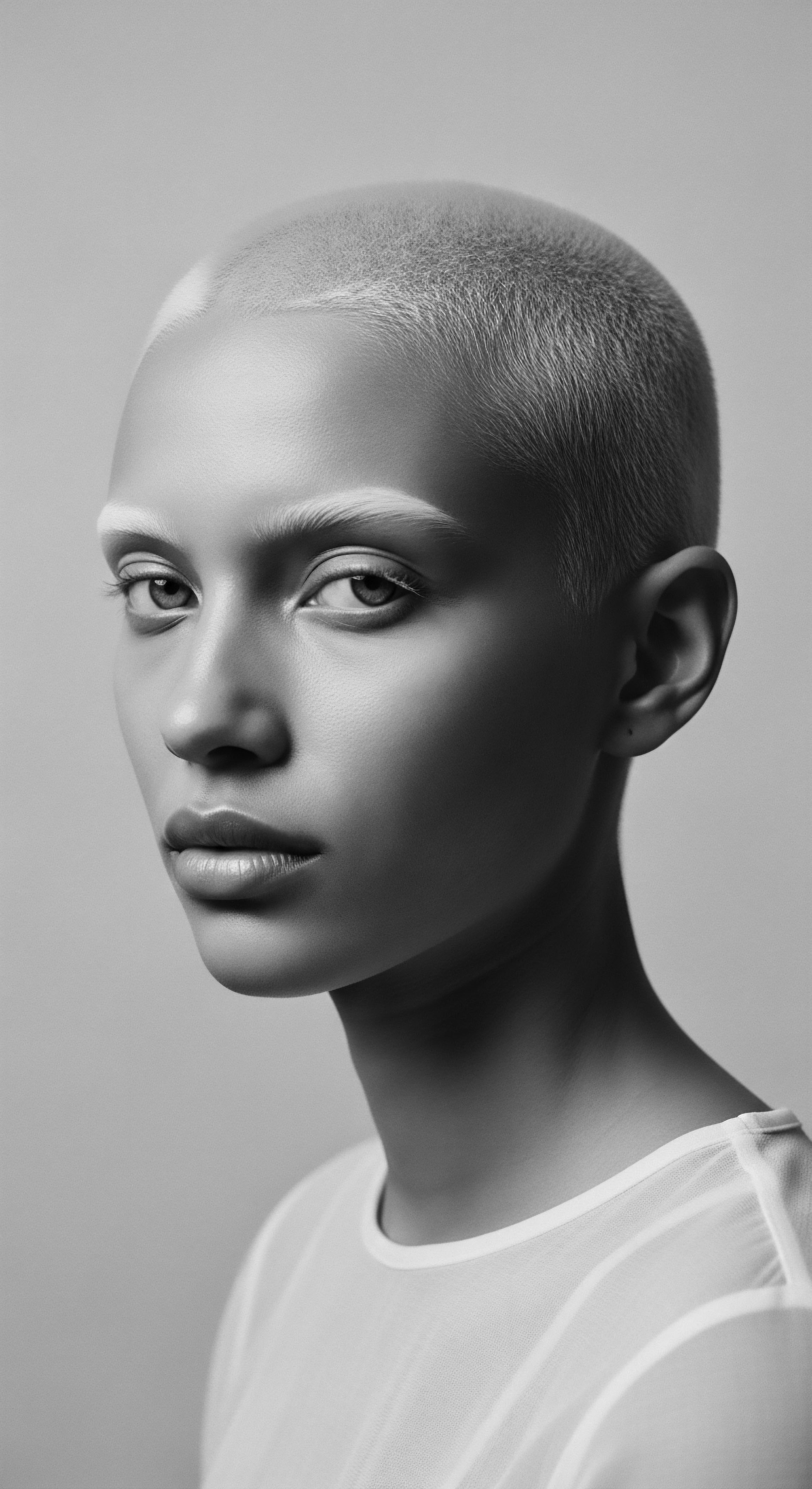
Roots
The story of textured hair, particularly for those of Black and mixed-race ancestry, is a profound narrative woven into the very fabric of human existence. It speaks of ancient traditions, resilience against harsh realities, and a deep, abiding connection to self and community. How ancestral head coverings influenced textured hair health and cultural identity is a question that leads us into this rich heritage, a journey exploring not merely utilitarian practices but a lineage of care, symbolism, and survival. It is a dialogue between the elemental biology of hair strands and the powerful echoes of a past that continues to shape modern experience.
From the sun-drenched savannas of ancient Africa to the fraught passages of forced migration and beyond, head coverings have served as silent, yet eloquent, witnesses to the human spirit’s enduring strength. They are not simply pieces of cloth; they are living artifacts, imbued with the wisdom of generations who understood hair as a sacred extension of being. Their purpose extended well past adornment, reaching into the very core of physical well-being and collective spirit.
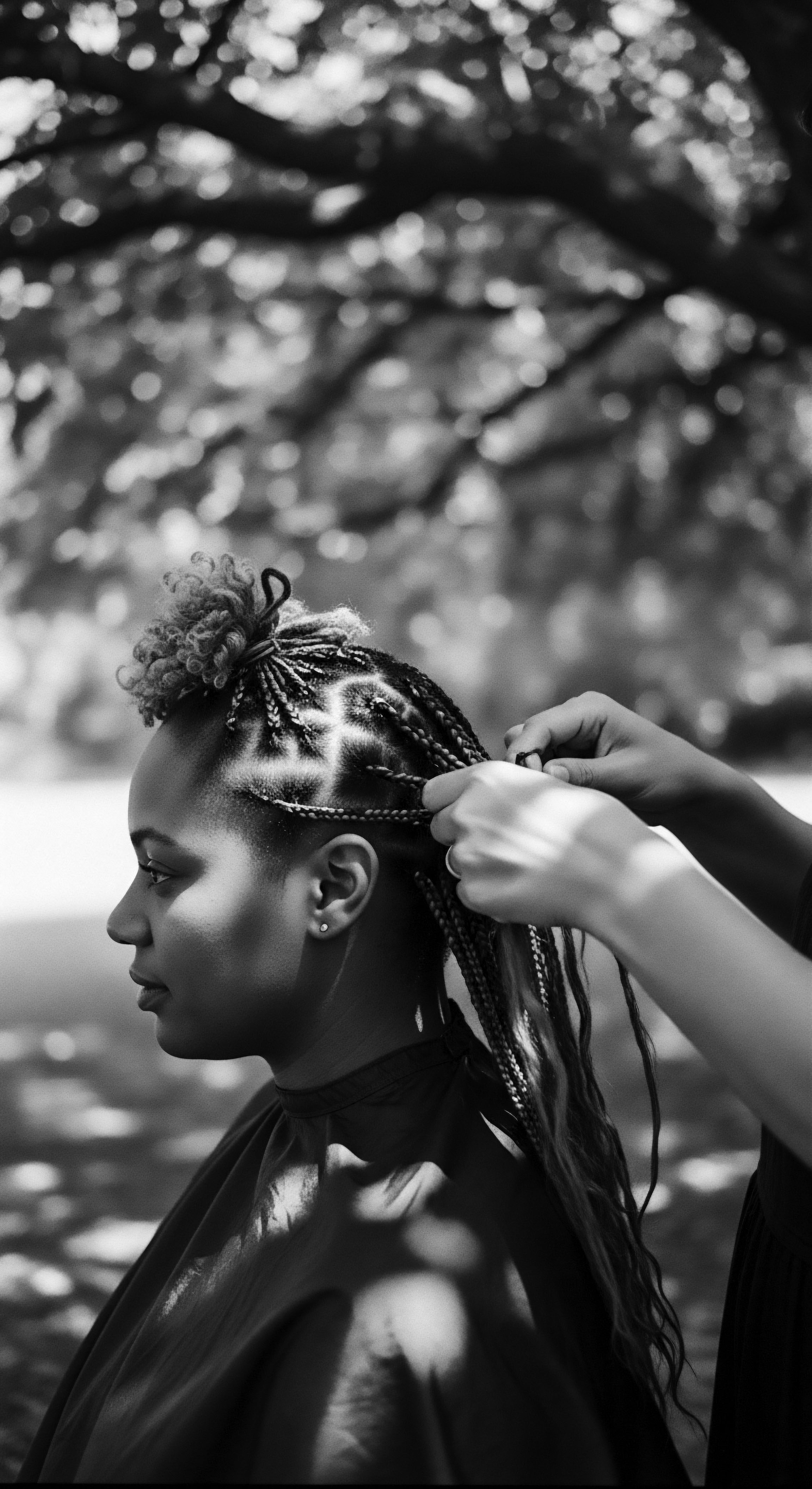
What Ancestral Hair Anatomy Reveals?
To truly grasp the influence of ancestral head coverings, one must first understand the unique architecture of textured hair itself. This hair type, with its varied curls, coils, and kinks, possesses inherent characteristics that made ancestral protective measures not only beneficial but necessary. The elliptical shape of the hair follicle, producing hair shafts that spiral or zigzag, results in natural points of vulnerability along the strand where the cuticle layers can lift.
This structure, coupled with fewer cuticle layers compared to straight hair, means textured hair is more susceptible to moisture loss and breakage. Its natural dryness made protection a constant concern.
In many ancient African societies, hair was not simply a physical attribute; it held spiritual and social power. As the highest point of the body, it was often regarded as a conduit to the divine, a spiritual antenna (Byrd & Tharps, 2014). Maintaining its health and integrity was therefore not just a matter of aesthetics, but a spiritual and communal obligation. Head coverings became an integral part of this reverence, shielding these sacred strands from environmental elements that would otherwise compromise their delicate balance of moisture and strength.
Ancestral head coverings represent a profound legacy of care, a testament to the ingenious ways communities safeguarded textured hair and preserved identity across generations.
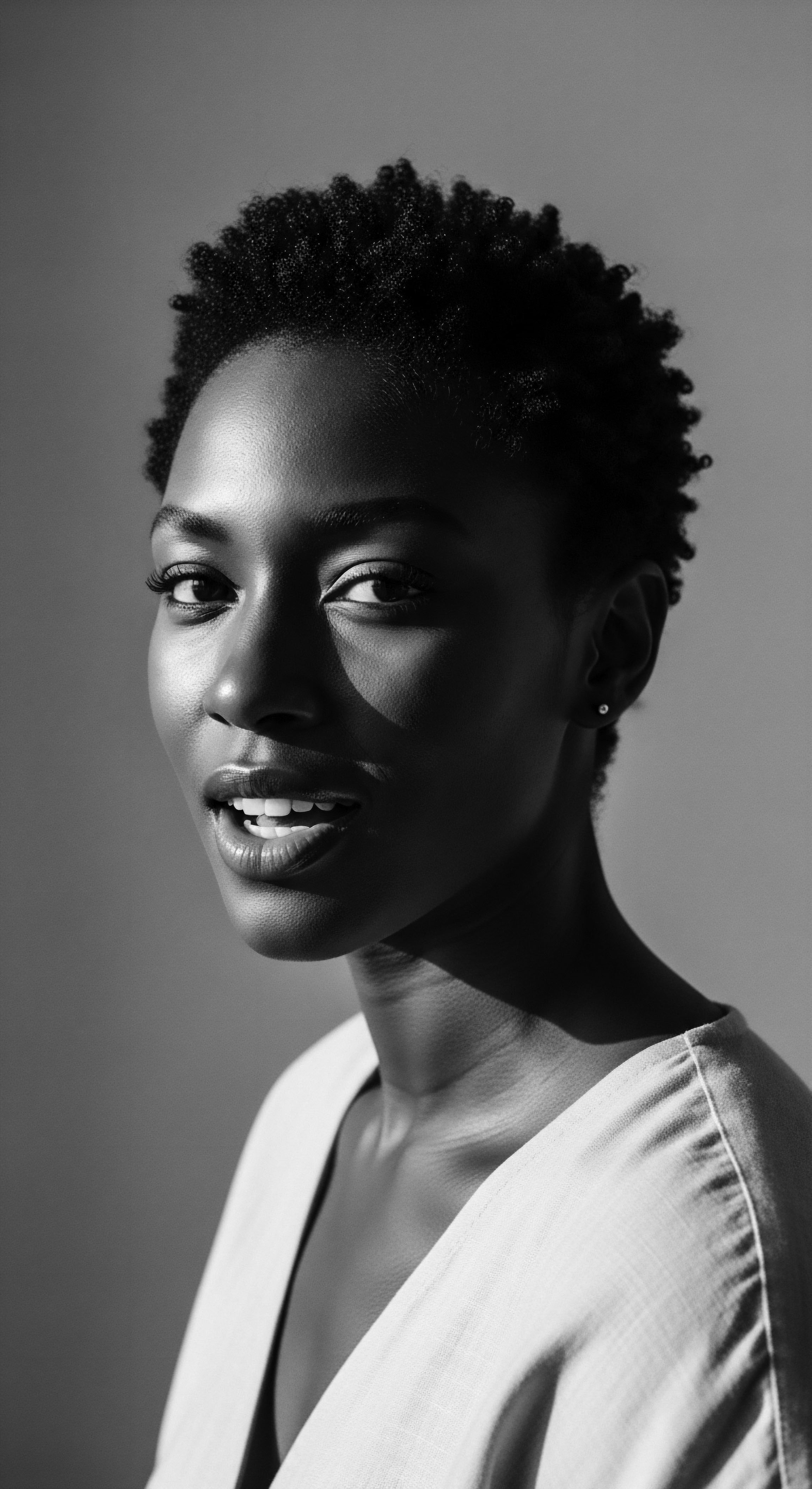
The Elemental Lexicon of Textured Hair Care
The historical understanding of textured hair health was rooted in observation and adaptation, long before modern scientific terms existed. The lexicon of care was practical, built around natural resources and generational knowledge. Terms like Tignon, Gele, Duku, and Doek are more than just names for headwraps; they speak to specific regional traditions, styles, and meanings that developed over centuries (JD Institute of Fashion Technology, 2021). These coverings were applied with an intuitive understanding of hair’s need for protection from the sun, dust, and drying winds, particularly in arid climates.
An early example of this ancestral wisdom comes from West Africa, where women intuitively understood that direct exposure to harsh sun and dry air could lead to brittle, weakened hair. Covering the hair was a proactive measure, akin to modern-day “protective styling.” The specific fabrics chosen, often breathable cottons or silks where available, allowed for air circulation while minimizing environmental damage. This practice reduced the need for frequent washing, which in turn helped to preserve the hair’s natural oils, a precious commodity for maintaining moisture in tightly coiled strands (Africa Imports, 2023).
| Traditional Covering Name Gele |
| Region of Origin Nigeria (Yoruba) |
| Protective Benefit Shielded elaborate styles, conserved moisture, conveyed status in formal settings. |
| Traditional Covering Name Duku |
| Region of Origin Ghana, Malawi |
| Protective Benefit Offered daily protection from sun and dust, helped retain natural scalp oils. |
| Traditional Covering Name Tignon |
| Region of Origin Louisiana (Afro-Creole) |
| Protective Benefit Initially enforced covering, reclaimed as a symbol of resistance and hair protection against elements. |
| Traditional Covering Name Isicholo |
| Region of Origin South Africa (Zulu) |
| Protective Benefit Protected intricate coiled hairstyles, especially for married women. |
| Traditional Covering Name These coverings served as physical shields, safeguarding textured hair from environmental wear and contributing to overall hair vitality. |

Ritual
The act of applying a head covering, far from being a mundane task, often formed a deep ritual, a practice passed through generations. These were not simply accessories; they were integral components of styling traditions, offering both practical utility and profound symbolic meaning. How head coverings influenced or became a part of traditional and modern styling heritage reaches into the very essence of communal life and individual expression. The methodical wrapping, the deliberate placement of cloth, these were silent conversations carried on through movement and gesture, speaking volumes about identity and care.
In many Black and mixed-race communities, head coverings became a primary method of preserving intricate hairstyles, extending their longevity, and maintaining health. Styles such as braids, twists, and cornrows, known today as Protective Styles, found their earliest companions in carefully chosen wraps. These coverings provided a crucial barrier, guarding against friction, dust, and moisture loss that could otherwise undo hours of meticulous styling work.

How Did Head Coverings Support Protective Styling?
Protective styling, an ancient art, finds its validation in the inherent needs of textured hair. When hair strands are coiled or tightly curled, they are prone to tangling and breakage due to mechanical friction. Head coverings minimized this friction, both during daily activities and particularly during sleep.
By containing the hair, they prevented it from rubbing against abrasive surfaces, such as rough clothing or unyielding sleeping mats. This practice directly contributed to reduced breakage and maintained the integrity of delicate hair structures.
Consider the daily lives of ancestral communities. Labor often took place outdoors, under varying climatic conditions. Head coverings shielded the scalp from direct sun, preventing dryness and potential sunburn, while also protecting hair from accumulating dirt and environmental debris.
During times of scarcity or travel, when frequent washing was not feasible, head coverings allowed hairstyles to remain clean and intact for longer periods (PBS, 2004). This practical application secured their position as essential tools in the styling regimen.

Ancient Artistry and Modern Echoes
The artistry of head wrapping itself became a form of styling. Women would manipulate fabrics into sculptural forms, their wraps communicating status, marital condition, or spiritual affiliation (Leone Culture, 2023). In some communities, the size, color, or pattern of a head covering could indicate a woman’s wealth or social standing (Green Views, 2022). This visual language, communicated through textile and arrangement, transformed a protective measure into a canvas for cultural expression.
- Material Selection ❉ Ancestral knowledge identified fabrics that offered protection without causing excessive heat or moisture build-up. While modern science validates the benefits of silk for reducing friction and retaining moisture (Journal of Cosmetic Science, 2019), similar properties were sought in natural fibers available to early communities.
- Form and Function ❉ Different wraps served different purposes. A loose, breathable wrap might be worn during manual labor to protect from dust, while a more tightly secured wrap could preserve intricate braids overnight. The choice reflected a practical understanding of hair needs in diverse contexts.
- Cultural Continuity ❉ The headwrap’s journey through the transatlantic slave trade profoundly shaped its meaning. What was once a symbol of status and cultural identity in Africa became, for enslaved women, a badge of imposed subservience by white enslavers (Griebel, 1995a). Yet, through acts of covert resistance, these women transformed the headwrap into a defiant expression of dignity and a link to their lost heritage, often through vibrant colors and unique tying styles (JD Institute of Fashion Technology, 2021).
The enduring practice of wearing head coverings for hair preservation continues today. Modern silk or satin bonnets, for instance, are direct descendants of these ancestral protective customs (NOCHKA, 2024). The smooth surface of silk significantly reduces friction on hair strands, helping to prevent breakage and frizz that can occur from rubbing against cotton pillowcases (Oz Durag, 2024). This scientific understanding echoes the practical wisdom of ancestors who sought to minimize damage and maintain hair health through various coverings.
The styling heritage of textured hair is profoundly linked to head coverings, which provided protection, maintained intricate designs, and served as powerful expressions of cultural identity.

Relay
The story of ancestral head coverings carries forward, a living relay from past generations to the present, profoundly shaping how we approach textured hair care and identity today. This journey extends beyond historical context, touching upon the scientific validations of ancient practices, the psychological effects of hair representation, and the enduring legacy of resilience that head coverings symbolize. How ancestral head coverings inform holistic care and problem-solving rooted in heritage and ancestral wisdom involves a multi-layered understanding, bridging millennia of human experience with contemporary knowledge. It speaks to a wisdom that understood care as a continuous, all-encompassing commitment.
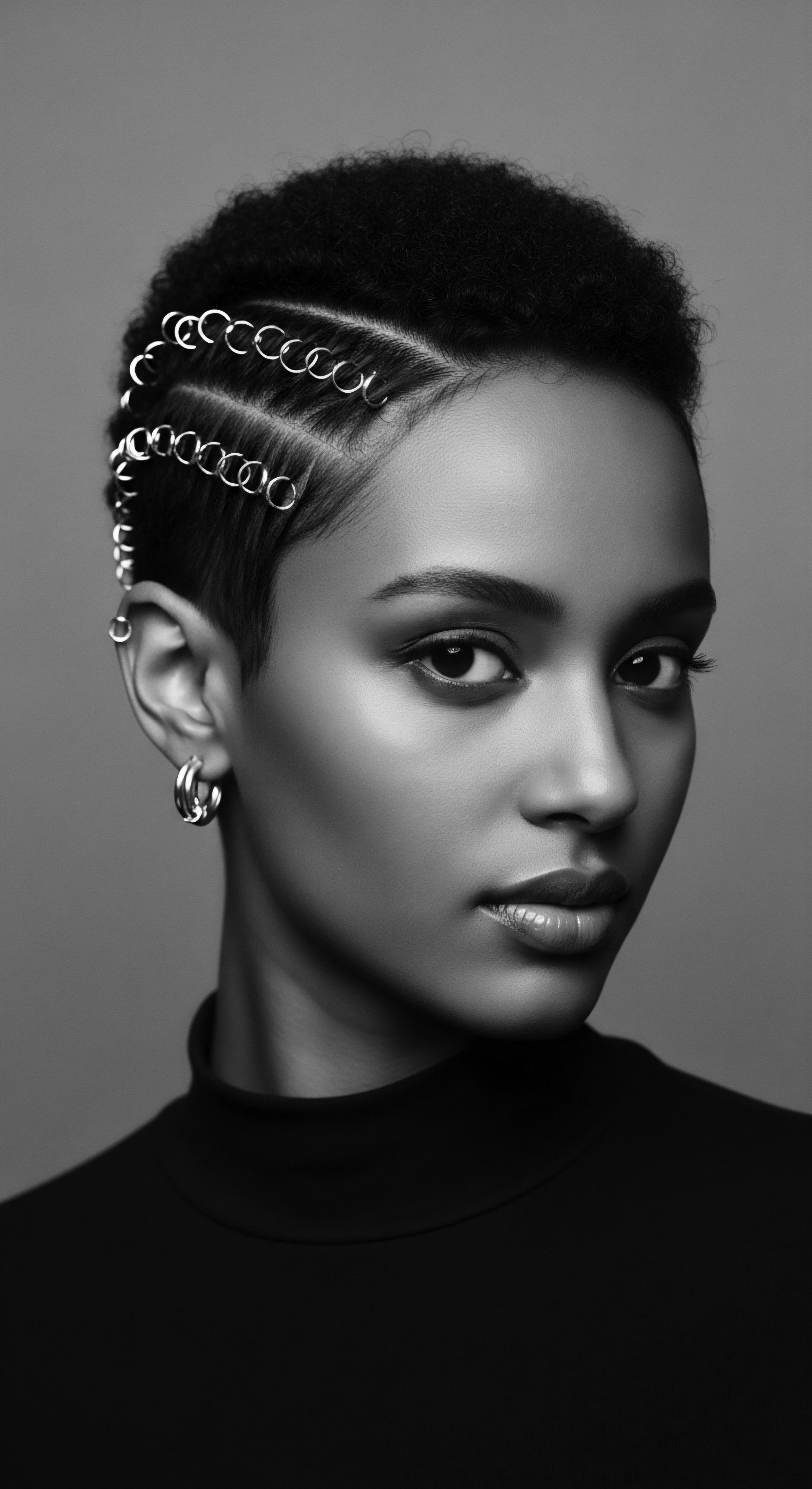
How Do Modern Practices Echo Ancestral Hair Wellness?
Many contemporary practices in textured hair care directly reflect ancestral wisdom, often with modern scientific validation. The emphasis on moisture retention, gentle handling, and protective styles finds deep roots in historical practices where head coverings played a central role. For example, the use of naturally derived butters and oils, like shea butter or coconut oil, to seal moisture into hair strands before covering, mirrors ancient methods of nourishing hair and scalp (Africa Imports, 2023). These methods were crucial for hair prone to dryness and breakage.
The act of covering hair, particularly at night, has been a long-standing tradition. In ancient Kemetic (Egyptian) societies, people wore head coverings to keep elaborate hairstyles in place and to allow conditioning treatments to absorb fully (Quora, 2022). This ancient practice of preserving a style and nurturing hair overnight directly correlates with the widespread use of silk or satin bonnets and scarves today. Research confirms that silk creates less friction against hair than cotton, reducing tangles, breakage, and moisture loss, thereby promoting overall hair vitality (Suzhou Taihu Snow Silk, 2025).

A Legacy of Nighttime Sanctuary
The nighttime ritual of covering hair is a profound example of ancestral wisdom’s enduring practical application. For textured hair, sleeping unprotected on abrasive surfaces such as cotton pillowcases can lead to friction, frizz, and significant breakage. Ancestral communities intuitively understood the need for this barrier.
- Reduced Friction ❉ The smooth surface of silk or satin bonnets minimizes the friction between hair and sleeping surfaces. A controlled study published in the International Journal of Cosmetic Science showed hair samples exposed to silk experienced 43% less cuticle damage compared to cotton under identical conditions (LANI SILK, 2025). This directly contributes to fewer split ends and less breakage.
- Moisture Preservation ❉ Unlike absorbent materials such as cotton, which can draw moisture from the hair, silk and satin allow hair to retain its natural oils and hydration (OZ Durag, 2024). This is particularly vital for textured hair, which tends to be naturally drier.
- Style Longevity ❉ Head coverings worn during sleep help to maintain hairstyles, extending the life of braids, twists, or blowouts. This reduces the frequency of manipulation, which in turn minimizes mechanical stress on the hair shaft.
This practice is not only about physical protection; it embodies a deep respect for the hair, an acknowledgment of its delicate nature, and a commitment to its well-being. It is a quiet moment of self-care, a legacy passed down through familial lines.
The historical roots of head coverings reveal a consistent thread of adaptability and resistance, transforming objects of control into symbols of enduring identity and self-affirmation.

How Do Head Coverings Signal Identity and Resistance?
Beyond physical care, head coverings hold profound symbolic weight within the cultural identity of Black and mixed-race people. In many West African societies, the headwrap signified power, social status, marital status, age, or religious beliefs (JD Institute of Fashion Technology, 2021). The specific way a woman tied her headwrap could convey intricate messages to her community.
The colonial period and transatlantic slave trade imposed a drastic shift in this meaning. In the Americas, head coverings, such as the Tignon laws in Louisiana in the late 1700s, were legally mandated for Black women, whether enslaved or free, initially as a means of control and to designate their supposed lower social standing (Green Views, 2022). This deliberate act sought to strip Black women of their cultural pride and visual expression. However, in a powerful act of resistance, these women transformed the symbol of oppression into a badge of defiance.
They adorned their tignons with vibrant colors, intricate patterns, and elaborate styles, making them statements of beauty and resilience that often outshone their white counterparts (FIU, 2017). Helen Bradley Griebel’s study, “The African American Woman’s Headwrap ❉ Unwinding the Symbols,” highlights this paradox, where the headwrap became a “uniform of rebellion” against imposed servitude.
“The history of African American hair is unique and has served as a symbol of empowerment, oppression, and resistance.” (Johnson, 2023)
This historical example is a potent illustration of how ancestral practices, even when co-opted or weaponized, were reclaimed and re-infused with meaning. The headwrap became a visual marker of collective identity, a silent yet powerful declaration of heritage and spirit in the face of dehumanization (PULSE Magazine, 2022). This defiant spirit lives on, manifesting in the modern popularity of headwraps as expressions of Black pride, cultural connection, and personal style.
| Historical Period Pre-Colonial Africa |
| Primary Significance of Head Covering Status, Spirituality, Protection from elements. |
| Impact on Hair Health/Cultural Identity Promoted hair health by reducing sun/dust damage; solidified communal and individual identity. |
| Historical Period Transatlantic Slave Trade / Colonial Americas |
| Primary Significance of Head Covering Imposed subservience, utilitarian protection. |
| Impact on Hair Health/Cultural Identity Hair protection from harsh labor; became a powerful symbol of resistance and hidden identity. |
| Historical Period Post-Emancipation / Civil Rights Era |
| Primary Significance of Head Covering Reclamation of cultural pride, political statement. |
| Impact on Hair Health/Cultural Identity Supported natural hair movement; solidified Black identity and self-love. |
| Historical Period Contemporary Era |
| Primary Significance of Head Covering Fashion, Heritage Celebration, Hair Protection (nighttime). |
| Impact on Hair Health/Cultural Identity Continued focus on hair vitality; diverse personal expression and cultural affirmation. |
| Historical Period The headwrap's meaning shifted with historical currents, yet consistently served as a testament to the resilience and adaptability of textured hair heritage. |
The narrative of head coverings is deeply intertwined with the story of textured hair, illustrating a persistent thread of innovation and defiance. It represents a continuous conversation between our physical being and our collective past, reminding us that care, for textured hair, has always been an act of heritage.
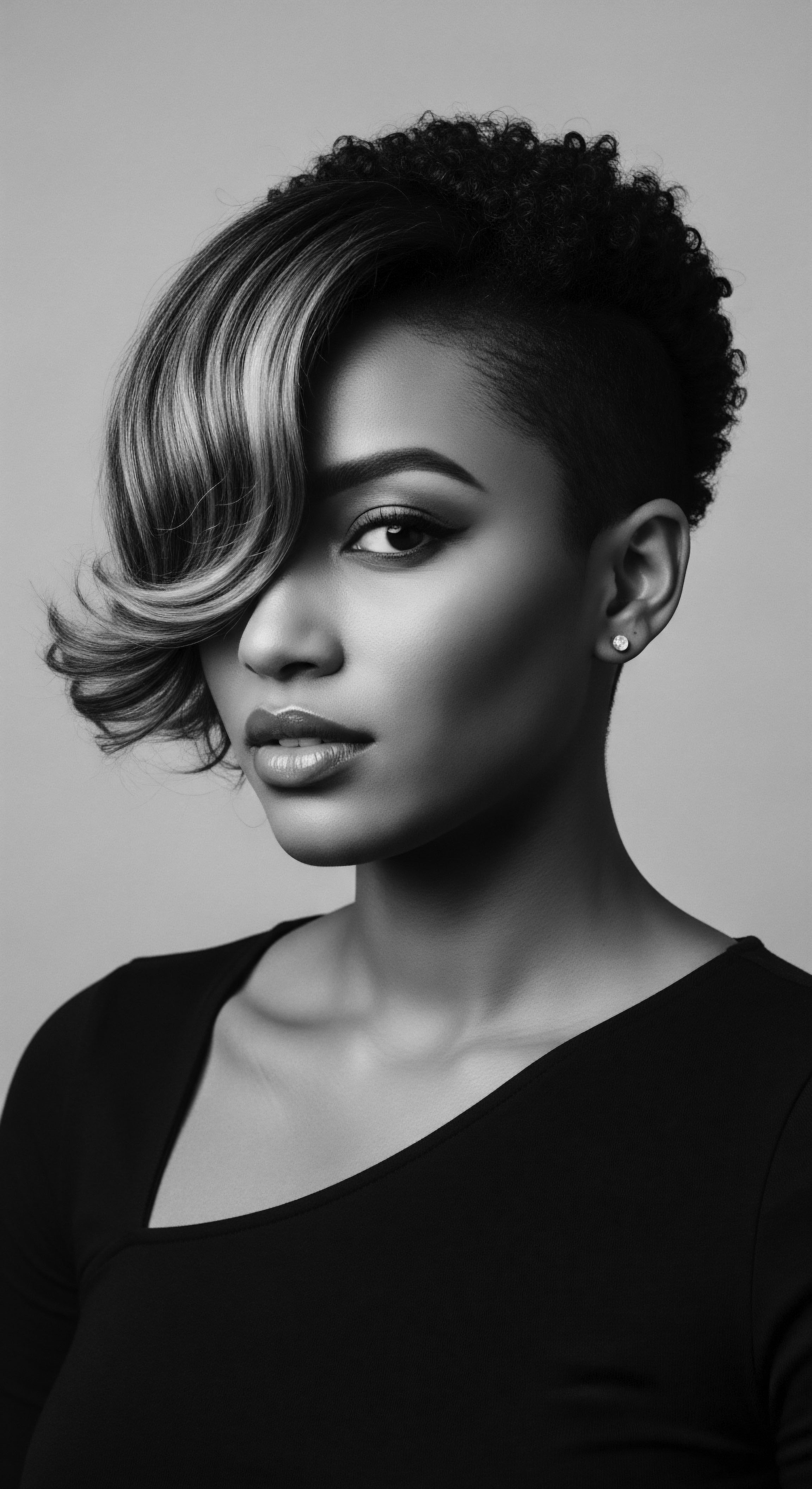
Reflection
The journey through ancestral head coverings, their influence on textured hair health, and their profound connection to cultural identity, leaves us with a resonant understanding. It is a testament to the enduring power of heritage, a living, breathing archive of wisdom passed down through time. From the earliest protective gestures to the defiant statements woven into fabric during eras of oppression, head coverings have always been more than simple adornments. They speak to the very soul of a strand, acknowledging its unique character and its intrinsic value within the human experience.
This exploration reveals a truth that echoes through generations ❉ hair care, particularly for textured hair, has always been intertwined with self-preservation, communal belonging, and a vibrant assertion of identity. The ancestral practices of protecting hair, whether from harsh environmental elements or the gaze of an oppressive society, laid the foundation for modern regimens. We carry forward this legacy in every thoughtful product choice, every gentle styling technique, and every purposeful head covering donned for protection or personal expression.
The wisdom of those who came before us, who understood the language of their hair and the power of its preservation, continues to guide us. It encourages a deeper appreciation for the resilience etched into each coil and curl, a vibrant link to a rich and unyielding heritage.

References
- Byrd, A. D. & Tharps, L. L. (2014). Hair Story ❉ Untangling the Roots of Black Hair in America. St Martin’s Press.
- Griebel, H. B. (1995a). The African American Woman’s Headwrap ❉ Unwinding the Symbols. Art, Design, and Visual Thinking.
- Johnson, D. (2023, November 30). What Every Dermatologist Must Know About the History of Black Hair. Dermatology Times.
- LANI SILK. (2025, April 24). Silk Bonnets ❉ The Essential Guide to Protecting Your Hair While You Sleep.
- Leone Culture. (2023, June 20). Exploring the Significance Of Headwraps In African Fashion And Traditions.
- NOCHKA. (2024, March 27). The Science Behind Reversible Silk Bonnet Sets.
- OZ Durag. (2024, March 11). Silk Bonnets for Sleep ❉ The Benefits of Wearing One at Night.
- PBS. (2004). Slave Women and the Head-Wrap – Slavery and the Making of America.
- Quora. (2022, March 13). Why do black people wear head/hair caps to bed?
- Suzhou Taihu Snow Silk. (2025, April 17). Sleeping in A Silk Hair Bonnet ❉ Silk Bonnet Benefits for Your Hair Care.
- The Natural Hair Advocate. (2016, May 31). Wrap it Up ❉ A Tribute to the Head Tie.
- JD Institute of Fashion Technology. (2021, June 23). HEADWRAPS ❉ HISTORY AND EVOLUTION.
- Green Views Residential Project. (2022, October 5). History of the African head wrap.
- PULSE Magazine. (2022, June 7). Cultural Head Coverings.
- Africa Imports. (2023, April 25). Traditional African Secrets For Long And Healthy Hair.
- FIU. (2017, August 4). Head Wraps | ArtSpeak.
